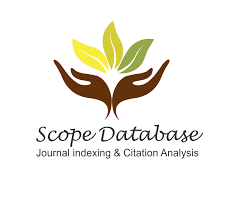Details
A Critical Review on The Effect of Feed to Inoculum Ratio on Biogas Digestion
M Kalyani
Department of Chemical Engineering, Chaitanya Bharathi Institute of Technology, Hyderabad, India
Shalini Suran
Department of Chemical Engineering, Chaitanya Bharathi Institute of Technology, Hyderabad, India
P Ramya
Department of Chemical Engineering, Chaitanya Bharathi Institute of Technology, Hyderabad, India
Download PDF http://doi.org/10.37648/ijrst.v11i02.001
http://doi.org/10.37648/ijrst.v11i02.001
Abstract
This paper primarily focuses on the effect of feed to inoculum ratio on biogas digestion; and outlines the various feeds, inoculums, and synergistic effects of the combination of inoculums by referring to the literature. The Start-up of an anaerobic digestion system is highly critical and pivotal for the successful operation of an anaerobic digester. For this purpose, a certain amount of inoculum is added to the digester along with the substrate to provide the necessary microorganisms to initiate the digestion process. The ratio and the type of inoculum used substantially affect the rate of biodegradation and the lag time. The degradation of substrate depends on the concentration of microorganisms. When food waste was considered as the feed it was found that factors such as waste oil content, the addition of alkaline buffer, particle size, organic loading rate had a considerable effect on the feed to inoculum ratio. Studies considering some other feeds such as animal by products from piggery slaughterhouses, poultry slaughterhouse wastes, agro-industrial waste, anaerobically digested sludge obtained from municipal wastewater, replika klockor rolex and dewatered digestate cake were also compared. Hence, the objective of this study is to offer an integrated view of the appropriate feed and the inoculum under the effect of various other essential parameters. The major performance indicators from this study were found to be particle size of inoculum, organic loading rate, the addition of alkaline buffer, F/I ratio, and structure of inoculum
Keywords: biogas; inoculum; feed for biogas; feed to inoculum ratio
References
- BP statistical review of world energy. BP, London; https://www.bp.com/content/dam/bp/businessites/en/global/corporate/pdfs/energy-economics/statistical-review/bp-stats-review-2020-full-report.pdf
- Muhammad Rizwan Haider, Zeshan, Sohail Yousaf, Riffat Naseem Malik, Chettiyappan Visvanathan, 2012, Effect of mixing ratio of food waste and rice husk co-digestion and substrate to inoculum ratio on biogas production.
- Elbeshbishy, E., Nakhla, G., & Hafez, H., 2012, Biochemical methane potential (BMP) of food waste and primary sludge: Influence of inoculum pre-incubation and inoculum source. Bioresource Technology, 110, 18–25.
- Liu, G., Zhang, R., El-Mashad, H. M., & Dong, R., 2009, Effect of feed to inoculum ratios on biogas yields of food and green wastes. Bioresource Technology, 100(21), 5103–5108.
- Nallathambi Gunaseelan, V., 1995, Effect of inoculum/substrate ratio and pretreatments on methane yield from Parthenium. Biomass and Bioenergy, 8(1), 39–44.
- Raposo, F., Banks, C. J., Siegert, I., Heaven, S., & Borja, R., 2006, Influence of inoculum to substrate ratio on the biochemical methane potential of maize in batch tests. Process Biochemistry, 41(6), 1444–1450.
- Prashanth, S., Kumar, P., & Mehrotra, I., 2006, Anaerobic Degradability: Effect of Particulate COD. Journal of Environmental Engineering, 132(4), 488–496.
- Lesteur, M., Bellon-Maurel, V., Gonzalez, C., Latrille, E., Roger, J. M., Junqua, G., & Steyer, J. P., 2010, Alternative methods for determining anaerobic biodegradability: A review. Process Biochemistry, 45(4), 431–440.
- Neves, L., Oliveira, R., Alves, M.M., 2004. Influence of inoculum activity on the biomethanization of a kitchen waste under different waste/inoculum ratios. Process Biochem. 39 (12), 2019–2024
- Yangyang Li, Yiying Jin, Aiduan Borrion, Jinhui Li; 2017. Influence of feed/inoculum ratios and waste cooking oil content on the mesophilic anaerobic digestion of food waste.
- Pooria Latifi, Mohsen Karrabi, Shahnaz Danesh; 2019. Anaerobic co-digestion of poultry slaughterhouse wastes with sewage sludge in batch-mode bioreactors (effect of inoculum-substrate ratio and total solids).
- Oluwatosin Obataa, Arlene Ditchfielda, Angela Hattona, Joseph Akunnab; 2020. Investigating the impact of inoculum source on anaerobic digestion of various species of marine macroalgae.
- E. Hosseini Koupaie, A. Azizi, A.A. Bazyar Lakeh, H. Hafez, E. Elbeshbishy; 2019. Comparison of liquid and dewatered digestate as inoculum for anaerobic digestion of organic solid wastes.
- B.A. Parra-Orobio, L.S. Angulo-Mosquera, J.S. Loaiza-Gualtero, W.A. Torres-Lopez, P. Torres-Lozada; 2018. Inoculum mixture as an improvement strategy for anaerobic digestion of food waste for the methane production.
- F. Raposo, C.J. Banks, I. Siegert, S. Heaven, R. Borja; 2006. Influence of inoculum to substrate ratio on the biochemical methane potential of maize in batch tests.
- Wanli Zhang, Lintong Li, Wanli Xing, Bin Chen, Lei Zhang, Aimin Li, Rundong Li,and Tianhua Yang; 2019. Dynamic behaviors of batch anaerobic systems of food waste for methane production under different organic loads, substrate to inoculum ratios and initial pH.
- Frantseska-Maria Pellera Evangelos Gidarakos; 2016. Effect of substrate to inoculum ratio and inoculum type on the biochemical methane potential of solid agroindustrial waste.
- Helene Caillet, Edouard Lebon, Esther Akinlabi, Daniel Madyira, Laetitia Adelard; 2019. Influence of inoculum to substrate ratio on methane production in Biochemical Methane Potential (BMP) tests of sugarcane distillery waste water.
- Cynthia Kusin Okoro-Shekwaga, Mariana Vieira Turnell Suruagy, Andrew Ross, Miller Alonso Camargo- Valero; 2019. Particle size, inoculum-to-substrate ratio and nutrient media effects on biomethane yield from food waste.
- Shakira R. Hobbs, Amy E. Landis, Bruce E. Rittmann, Michelle N. Young, Prathap Parameswaran; 2017. Enhancing anaerobic digestion of food waste through biochemical methane potential assays at different substrate: inoculum ratios.
- Young-Man Yoon, Seung-Hwan Kim, Kook-Sik Shin, and Chang-Hyun Kim; 2014. Effects of Substrate to Inoculum Ratio on the Biochemical Methane Potential of Piggery Slaughterhouse Wastes.
- A. T. Ta, S. Babel; 2019. Utilization of green waste from vegetable market for biomethane production: influences of feedstock to inoculum ratios and alkalinity.
- Hulya Civelek Yoruklu, Emre Korkmaz, Neslihan Manav Demir, Bestami Ozkaya, Ahmet Demir; 2017. The impact of pretreatment and inoculum to substrate ratio on methane potential of organic wastes from various origins.
- Li, Y., Jin, Y., Li, J; 2016; Influence of thermal hydrolysis on composition characteristics of fatty acids in kitchen waste.
- Angelidaki, I., Sanders, W; 2004; Assessment of the anaerobic biodegradability of macro-pollutants.
- Chen, J.L., Ortiz, R., Steele, T.W.J., Stuckey, D.C; 2014; Toxicants inhibiting anaerobic digestion.











